Why
- – create curiosity about the Euro-Arab divide which should be seen as the Euro-Arab geographical region
- – try and ease the divide between privileged and underprivileged artists by offering travel grants to the underprivileged artists and rebalance opportunities offered
- – advocate about the lack of access to free-movement and therefore lack of opportunities for some
- – by creating open calls for mobility of artists from the MENA region to EU arts residencies, on the topic of borders we create an instant interest in the artistic community because the question of borders is a crucial one for them. MENA artists know that obstacles to travel, border restrictions limit their freedom and the freedom of their fellow citizens. The political and religious systems in this region exert control in a way that is often oppressive to citizens at large. Offering mobile opportunities to artists who will return to their region with new ideas and contacts, helps to alleviate such oppression and allows for cultural impact back in the MENA region.
Location
Paris, France/2.3522219000000177,48.85661400000001,4/1000x300.png)
Characteristics
Area
The Roberto Cimetta Fund is working all over Europe, North Africa and the Middle East since the organisation has a committee of 50 experts working in 22 countries of this zone. The actual office of the fund is located in Paris, but the outreach is tremendous. To date our database of contacts in the region has reached 15 000. So the area we work in is a "connected" area in the sense that a lot of our communication is done via internet, but we travel a lot too and we count on word of mouth to spread information about our opportunities. RCF does exactly that, offer opportunities, offer oxygen to artists and cultural operators isolated and who are finding it difficult to obtain funds.
Audience
The target group is artists and cultural operators, but our main concern is to link the mobile opportunity with local development of culture in communities. Age and nationality are not criteria for our work, what counts is that the people and projects we support lead to strengthening local art markets and local cultures. Our calls are open to all, they are not selective in their approach. Our aim is to break the tendency to always fund the same people, and allows everyone to access the system. All of this is building mutually respectful and reciprocal partnerships between Europe and the MENA region (our neighbors) for the future.
How the audience/participants were reached or discovered
We find, select and reach out to our audience through newsletters such as this one. This image is very difficult to read! because it is in three languages, English, Arabic and French so it is very very long. It was sent on 2nd February 2016 to over 8000 contacts through the European-MENA region and was opened by 7000 contacts of which 4000 clicked on the links in the message. We reach emails in about 98 countries worldwide.
The message in the newsletter explained the project of EGC, and announced that five residencies in Europe were offering residency spaces to two artists each (total of 10 artists in residence). The residencies presented what they could offer to the artists during the residencies.
![]()
Here is a photo of the first part of the call
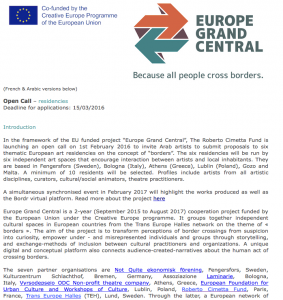
We received 350 online requests for information about this call and 119 written applications. The online requests were made via our website which acts as a filter, mainly to check we are not receiving applications from ineligible countries. We send them a link to a google sheet application form which they then fill in. Once we receive all the applications on the deadline, we check their eligibility. We found that 60 of the applications were eligible and could be evaluated by our Committee of experts. Once the applications were evaluated we chose those which received the best marks and we organized skype calls between the shortlisted applicants and the residency spaces. If they matched then the artists were selected.
Here is a presentation of where the applications came from. They came from Algeria, Egypt,Jordan, Lebanon, Morocco, Palestine, Syria and Tunisia. Each applicant applied for one residency and suggested the project they wanted to work on.
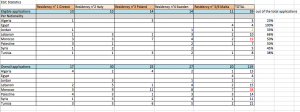
The announcement of the results of the application process was made in June 2016
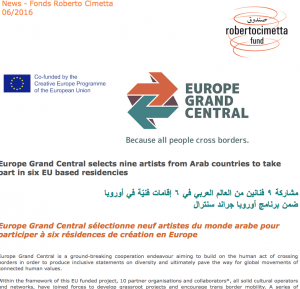
How it was done
How
RCF sends out the call, and all residencies will publicise it of course, RCF receives the applications, RCF checks the eligibility of the applications, RCF experts evaluate the applications, The residencies read the applications and evaluations and give their observations, the RCF Board makes the final choice (in line with the evaluations and observations), artists go to the residencies, do their projects, return home, report on the experience and receive their grant. The reports and projects feed into the Bordrs database and EGC project, simultaneous event.
http://www.cimettafund.org/
Interviews
The interviews were conducted by skype once we had listed the possible grantees for the residencies. The interviews were run by Angie Cotte, Secretary General of Roberto Cimetta Fund and the directors of the residency spaces. We arranged for the residency spaces to know as much as possible about the applicant before the skype so that we could focus on concrete questions such as when the residency would start, what was needed in terms of material or accommodation, what kind of art project works for both the artist and the art space.
Results
The results were very positive for all the artists who managed to travel to their residencies. The residencies went well and the work produced was encouraging and sometimes extremely important and interesting. However two of the artists didn’t manage to travel because they couldn’t obtain their visas. One of them was in Gaza at a time when travel restrictions were tightening, and the second artist endured facial discrimination being a Ghanean artist living in Morocco. The Embassy he contacted in order to travel to Greece didn’t allow his visa, despite having produced all the necessary paperwork.
The theme of borders was approached by each artist, even those who didn’t travel managed to produce work on this topic. Borders are fantastic concepts to work with both artistically and culturally. The concept in itself is one that you want to work against so it produces motivation from all. It is at the same time a very simple concept, even a neutral one, which can then lead to many different examples and contexts which can relate to each other, be compared with one another and therefore lead to interesting paths of investigation. At the same time it is a very topical question because of the question of migration. it relates to our understanding of our own borders be they personal, local or national. The national border and the European border are the most topical at the present time.
Majdal Nateel, Palestinian artist focused on the idea that we forbid ourselves to cross boundaries. Through her art project, Lane, people are invited to travel down an imaginative path which helps them overcome the boundaries they impose upon themselves.
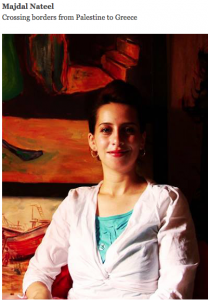
Hind Oudrini, Moroccan artist, meet different people in Sweden and questioned how each body is a territory. Somehow this is equivalent to a point of view, a positioning, a stance and at the same time our bodies are a superposition of memories related to our lived experiences in the world.
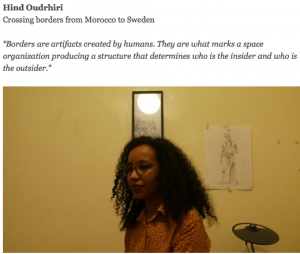
Paul Geday, Egyptian artist, explored the Maltese emigration to Egypt in the 19th and 20th centuries, which is interesting because it is the opposite of the current flux. His photographic research “Take me back to Cairo!” explains plurality and diversity through vernacular photography in the 50s.
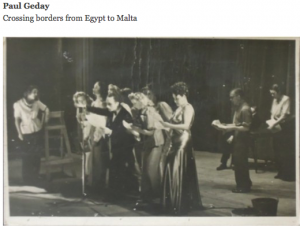
Amira Géhenne Khalfallah, theatre director examined the borders between my words and those of others. Are words imposed on us ? How do concept take shape in our minds ? When does choice intervene to decide if I want to challenge a concept or not ? Often our imagination plays tricks on us, particularly when our concepts are unclear. We have to deconstruct our imagination before we can reconstruct and decide if we want to adhere to a concept our not. For example , the concept of borders….
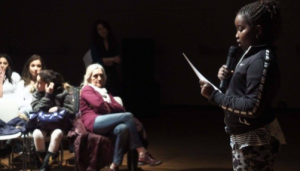
Charbel Samuel Aoun, a Lebanese artist, investigated cultural borders through the perception of women and checked the shifting role of women through their own time and changes in space. Many different opinions were collected. He noted that cultural borders had much less importance than psychological ones. Each person feels differently, perceives things differently, belongs differently, and his interviews proved an opposite to the basic generalisation concepts we create for understanding differences.
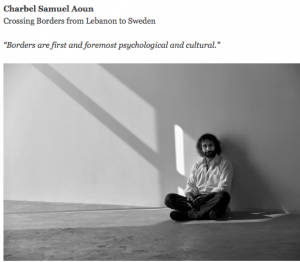
Radhouane Fiddini, a Tunisian artist used the concept of borders to produce art work by ordinary people. He wanted to strengthen peoples collaborative spirit and through this, break their own borders to take pride in what they achieve personally and collectively.
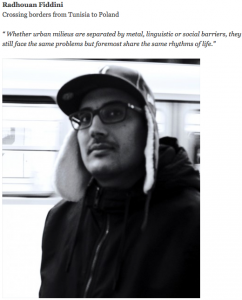
Reuben Yemoh Odoi, Ghanian artist living in Morocco, worked on an artistic project with migrants and socially engaged people. His work is relational practice and participatory dialogue on confrontational topics, which he transforms into music. His pieces raise questions about both the political (how one speaks up or doesn’t speak up) and the social (who has a voice).
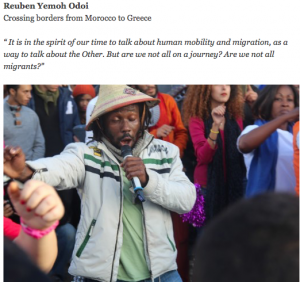
Deema Shahin, Jordanian artist, produced an exhibition in Malta around Mothers. The exhibition was entitled “Home is where Mom is”. She said from this experience that she learned how meaningless borders are. Contacts with Maltese families were very easy and friendly. She could understand also 90% of the Maltese language before she even started to learn it, because it is based on Arabic, her mother tongue.
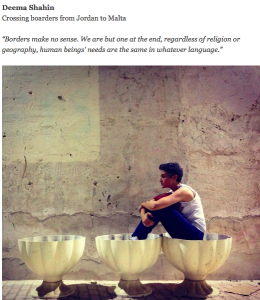
Finally, Dina Kobrosly, a Lebanese artist traveled to Poland and used interactive theater and puppetry to work with children and youth in neighborhoods. She challenges, encourages and engages children and youth in creative processes where they can express themselves freely.
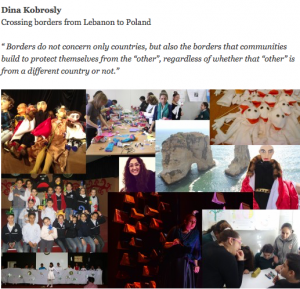
How it went
Main lessons learned
The project succeeded because it was a joint effort by RCF, Not Quite (coordinator) and the residency spaces. Such cultural cooperation projects must work in synergy so that each partner plays a specific role in coordination with the others.
The fact that two artists couldn’t travel to their residency is not a “failure” as such, but more a concrete reminder of how difficult such processes are in the current economic, social and political climate in this region of the world. This “failure” was in fact overcome, first and foremost due to the enthusiasm of the artists themselves who were resolute in confronting their inability to travel. They both suggested to overcome the border that had been built up around themselves through an artistic gesture. Art has no borders, this is the main lesson learnt.
Inspiration
The Roberto Cimetta Fund was inspired by the consortium of partners of Europe Grand Central, particularly by the enthusiasm of the project leader, Marcus Haraldson, as well as by the artists who were selected. We are also inspired by all the Arab artists who applied to the residency programme.
Credits
The Valletta 2018 Foundation who are doing a fantastic job in Malta, as well as the funding partners of the Roberto Cimetta Fund, the French Ministry of Culture and the Norwegian Ministry of Foreign Affairs.
Activity Timeline
2015
-
preparing
Preparing and organizing the call
2016
-
Open Call
Call is made and applications start coming in
-
First selection
A first round of selections of candidates by expert team of evaluators
-
Final selection
Final selection of the residencees
-
Residencies start
Residencies start in Malta, Sweden, Italy, Poland, and Greece
-
Exhibition by Charbel Samuel Aoun - Pareidolia in Fengersfor, Sweden
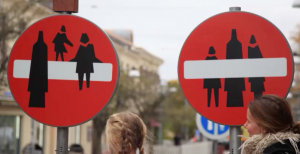
2017
-
Performance "Les mots des autres" by Amira Géhenne Khalfallah
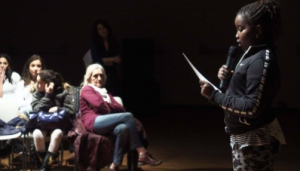
-
Exhibition by Deema Shahin
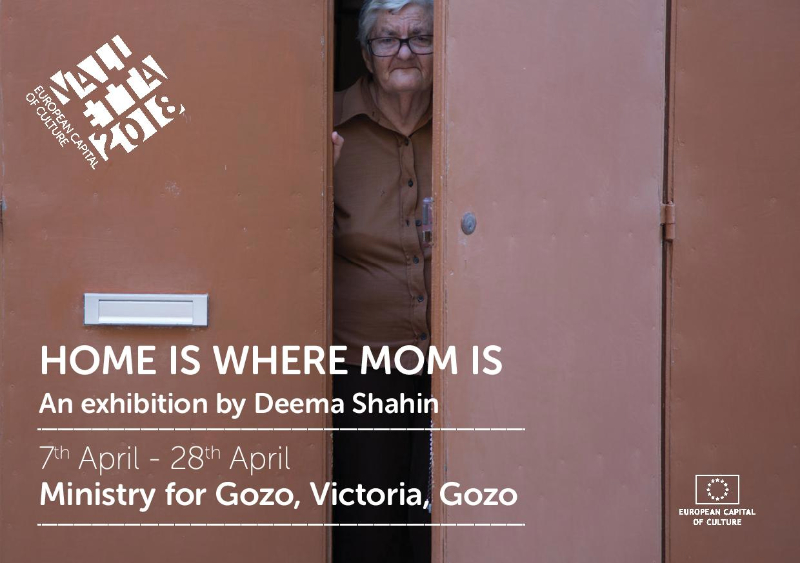
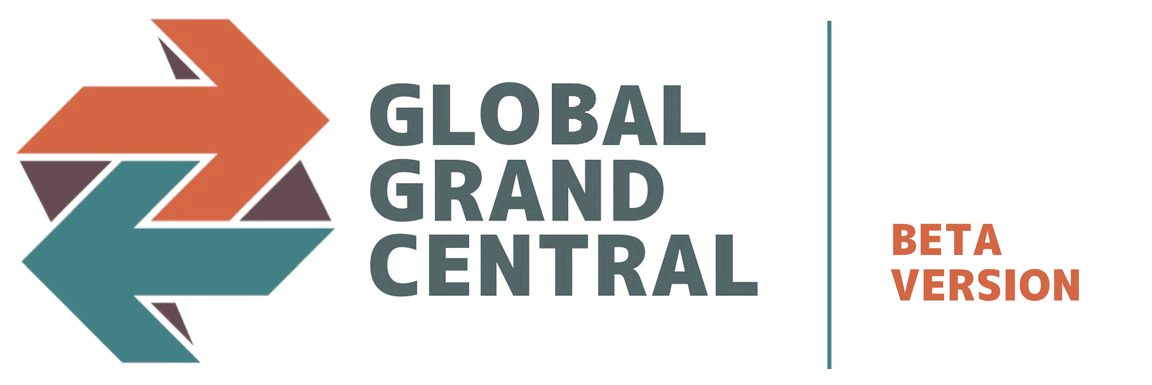
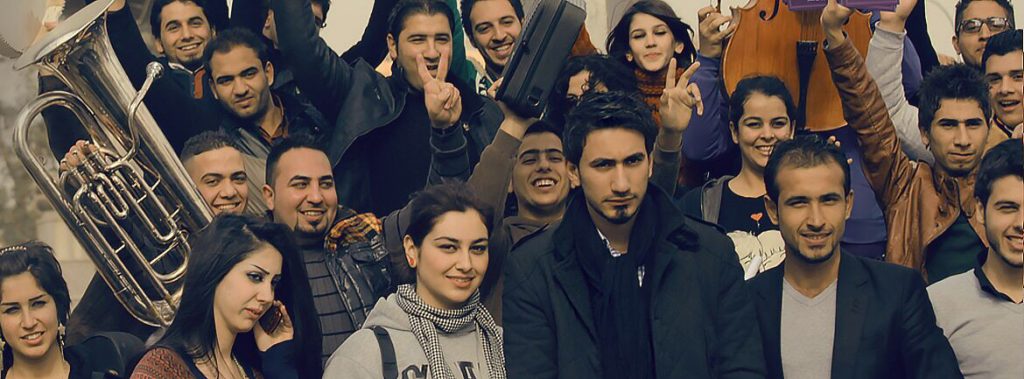
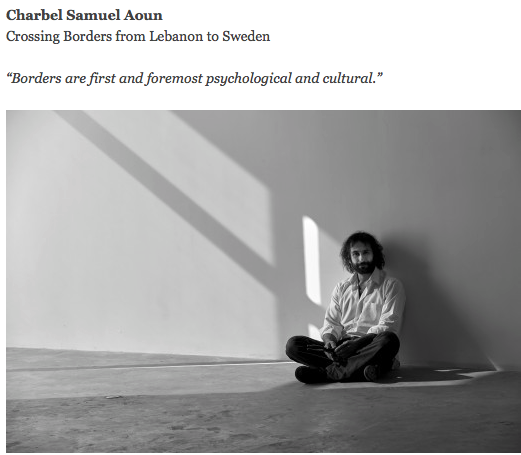
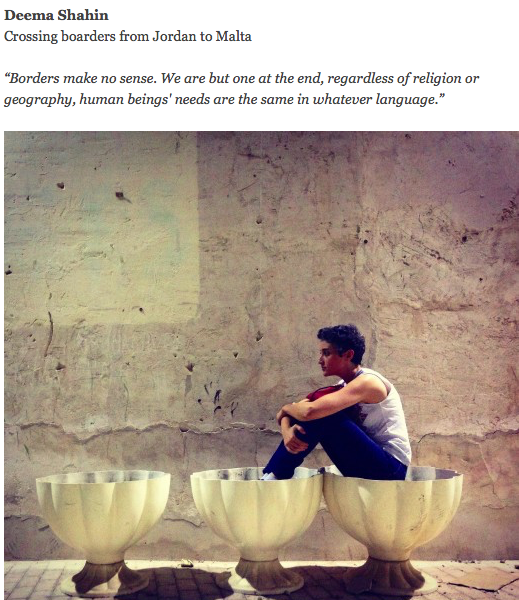
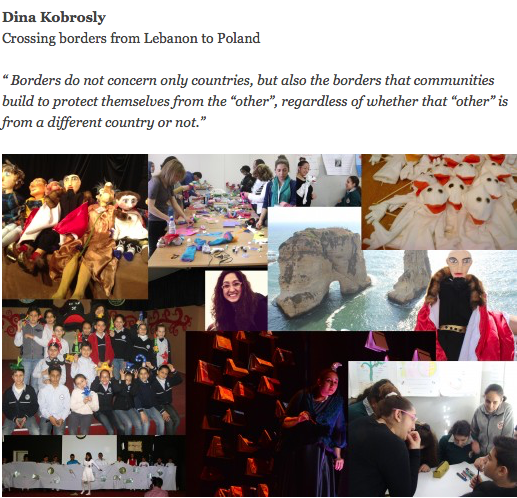
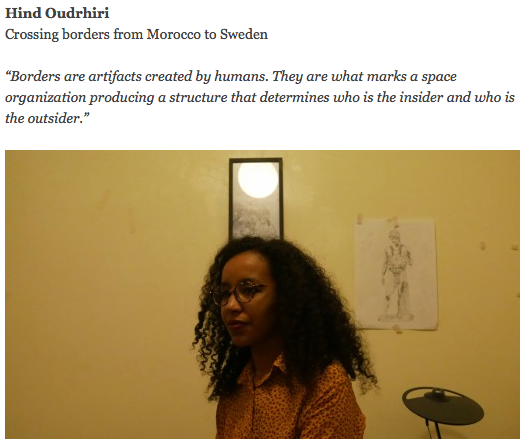
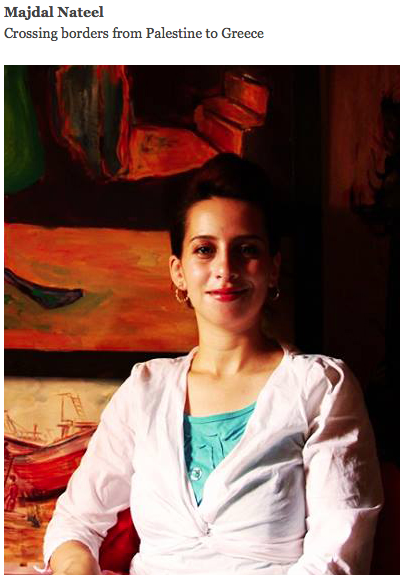
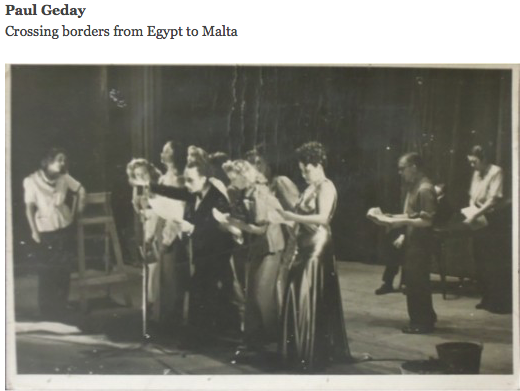
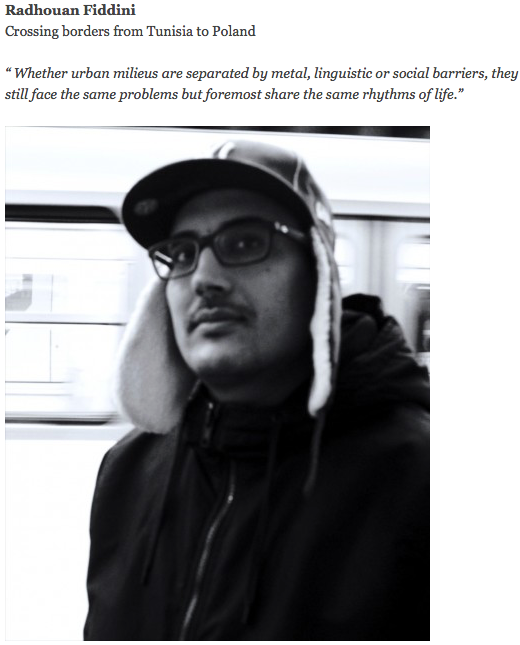
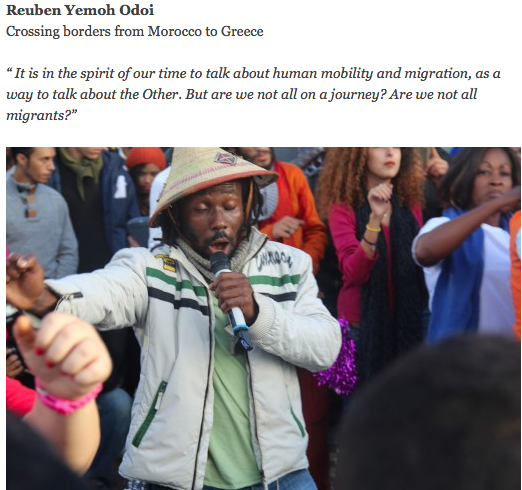
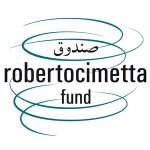 An activity by
An activity by 